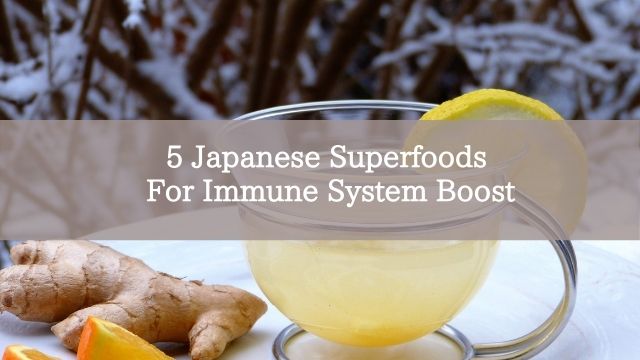Japanese are known to have the longest life expectancy in the world and also have low obesity rates. And this is evident for most of the Japanese traditional foods are healthy, delicious and most importantly superfoods!
What are superfoods?
Superfoods are known to have several health benefits packed with vitamins, minerals, antioxidants and good bacterias essential to have a naturally healthy and strong body. Learn these 5 superfoods Japanese eat everyday as a food staple and incorporate it to your own diet.
1. Matcha
Matcha is a traditional drink served in tea ceremonies and it was introduced to Japan from China by a Zen monk named Eisai in 1191. Now it is a famous latte drink all over the world and is prepared in different ways and assortments not only in drinks but in desserts, pastries and candies as a tasty way to enjoy this superfood. Matcha has high concentrations of magnesium, vitamin c, selenium and zinc and is filled with antioxidants, higher than other types of green tea. It is known to fight chronic diseases and helps reduce cell damage.
2. Natto
Natto is known to be an acquired taste so it’s a love it or hate it food. This divisive superfood is made of fermented soybeans and has sticky, slimy consistency and has a strong odor. But did you know that Japanese consume at least 7.5 billion packets of natto every year? It may be one of the huge contributors as to why Japanese have longevity. Natto is rich in protein and has a high source of vitamin K2 which is good for the bones and helps prevent osteoporosis. It also contains an enzyme which helps improve blood flow and can thin the blood which prevents hypertension, strokes, blood clots and heart attacks.
3. Miso
A staple of Japanese cuisine, miso is a fermented soybean paste with salt, rice, and kojikin fungus. The soybean paste is a culinary pillar in Japanese food flavoring. Miso is commonly prepared as a stock, a dip, a spread and even a marinade. You will find it usually as a soup mixed with seaweed broth or fish with wakame, green onions and tofu. It is a rich source of vitamins B1, B2, B6, B12, E, K, protein, calcium, potassium, folic acid, iodine, zinc, manganese, iodine and so much more!
4. Umeboshi
Another of an acquired taste, umeboshi is pickled plums that are small red balls with sour and salty flavor. Umeboshi is versatile and is used to a variety of dishes commonly eaten together with rice, to counteract its sharp taste. It is also prepared in sushi and onigiri rice balls.
In the Heian period (794-1185), Japanese took it as a medicine and used it to cure dysentery, purify water and fight typhoid fever. Umeboshi is packed with citric acid which improves circulation, boosts immune system and a natural prevention to cancer as it is high in fiber and antioxidants.
5. Yuzu
Yuzu is a very rich source of vitamin C three times higher than lemons. It is also high in antioxidants and the fragrance is known to be powerfully relaxing, reduces stress and mood boosting. Yuzu originates in Japan and it tastes like a tinge of lemon, mandarin and a sharp grapefruit. As a food, the citrus fruit is usually prepared as a dripping sauce mixed with vinegar and soy sauce and a bitter, sour juice in a popular soft drink. In Kochi prefecture, it is a signature yuzu wine. Moreover, it is used in scented sprays and essential oils.
Conclusion
Do you like superfoods? Which of these in the list would you like to try first? Let us know in the comments what healthy japanese food you have in your kitchen.
References:
https://www.japan.travel/en/guide/japanese-superfoods/
BY LA

